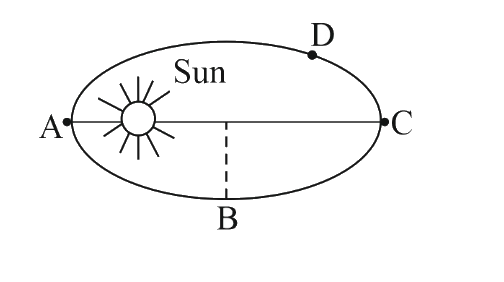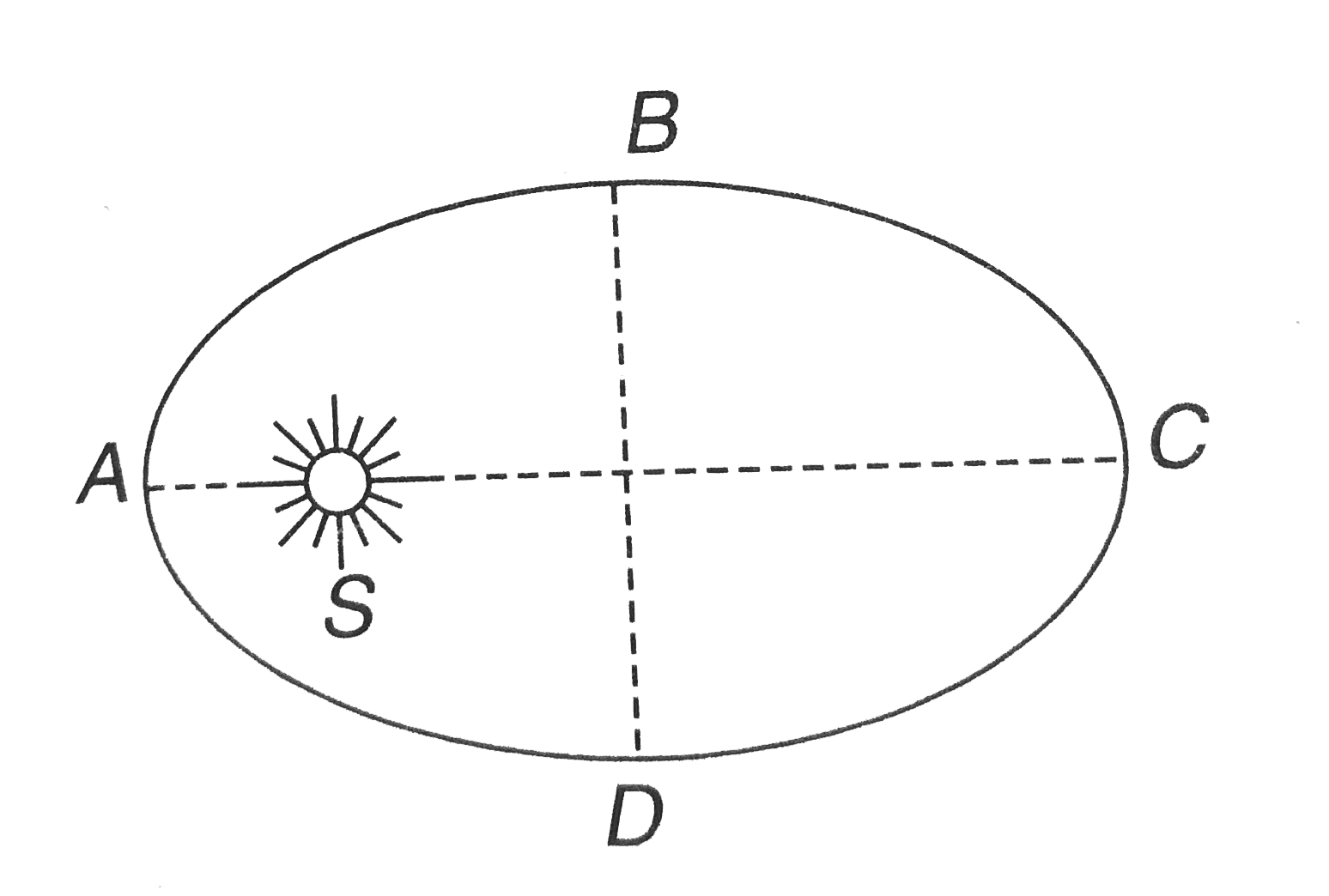A planet is revolving round the sun in an elliptical orbit, If v is the velocity of the planet when its position vector from the sun is r, then areal velocity of the planet is
|v×r|
2|r×v|
∣∣∣12(r×v)∣∣∣
None of these
The correct Answer is:C
To find the areal velocity of a planet revolving around the sun in an elliptical orbit, we can use Kepler's second law, which states that the line joining a planet to the sun sweeps out equal areas in equal times.
1. Understanding Areal Velocity:
Areal velocity is defined as the rate at which area is swept out by the radius vector of the planet. Mathematically, it is given by:
Areal Velocity=dAdt
where dA is the area swept out in a small time interval dt.
2. Using the Formula for Area:
The area dA swept out by the radius vector in a time interval dt can be expressed as:
dA=12r×vsin(θ)dt
where r is the position vector (distance from the sun), v is the velocity of the planet, and θ is the angle between the position vector and the velocity vector.
3. Finding Areal Velocity:
Dividing the area dA by the time interval dt, we have:
dAdt=12rvsin(θ)
4. Using the Cross Product:
The term r×v can be interpreted as the cross product of the position vector and the velocity vector. The magnitude of this cross product gives us the area swept out per unit time:
dAdt=12(r×v)
5. Final Expression for Areal Velocity:
Thus, the areal velocity of the planet is given by:
Areal Velocity=12r×v
Conclusion:
The areal velocity of the planet when its position vector from the sun is r and its velocity is v is:
Areal Velocity=12r×v
Areal velocity is defined as the rate at which area is swept out by the radius vector of the planet. Mathematically, it is given by:
Areal Velocity=dAdt
where dA is the area swept out in a small time interval dt.
The area dA swept out by the radius vector in a time interval dt can be expressed as:
dA=12r×vsin(θ)dt
where r is the position vector (distance from the sun), v is the velocity of the planet, and θ is the angle between the position vector and the velocity vector.
Dividing the area dA by the time interval dt, we have:
dAdt=12rvsin(θ)
The term r×v can be interpreted as the cross product of the position vector and the velocity vector. The magnitude of this cross product gives us the area swept out per unit time:
dAdt=12(r×v)
Thus, the areal velocity of the planet is given by:
Areal Velocity=12r×v
The areal velocity of the planet when its position vector from the sun is r and its velocity is v is:
Areal Velocity=12r×v
Topper's Solved these Questions
- GRAVITATIONBook:DC PANDEY ENGLISHChapter:GRAVITATIONExercise:(B) Chapter Exercises
Explore 31 Videos
- GRAVITATIONBook:DC PANDEY ENGLISHChapter:GRAVITATIONExercise:(C) Chapter Exercises
Explore 45 Videos
- GRAVITATIONBook:DC PANDEY ENGLISHChapter:GRAVITATIONExercise:Check Point 10.6
Explore 20 Videos
- GENERAL PHYSICSBook:DC PANDEY ENGLISHChapter:GENERAL PHYSICSExercise:INTEGER_TYPE
Explore 2 Videos
- KINEMATICSBook:DC PANDEY ENGLISHChapter:KINEMATICSExercise:INTEGER_TYPE
Explore 10 Videos
Similar Questions
Knowledge Check
A planet revolves around the sun in an elliptical orbit. If vp and va are the velocities of the planet at the perigee and apogee respectively, then the eccentricity of the elliptical orbit is given by :
AvpvaBva−vpva+vpCvp+vavp−vaDvp−vavp+vaA planet is revolving in an elliptical orbit around the sun. Its closest distance from the sun is r and the farthest distance is R. If the velocity of the planet nearest to the sun be v and that farthest away from the sun be V. then v/V is
AR2/r2Br2/R2CR/rDr/R
In elliptical orbit of a planet
View SolutionA planet is revolving round the sun in an elliptical orbit as shown in figure. Select correct alternative(s)
View SolutionA planet is revolving around the Sun in an elliptical orbit. Its closest distance from the Sun is r and farthest distance is R. If the orbital velocity of the planet closest to the Sun is v, then what is the velocity at the farthest point?
View SolutionFor a planet revolving around Sun in an elliptical orbit, to obtain its velocity at any point we have to apply
View SolutionA planet revolves around the sun in an elliptical . The linear speed of the planet will be maximum at

View SolutionA planet is revolving around the sun as shown in elliptical path. The correct option is

View Solution
